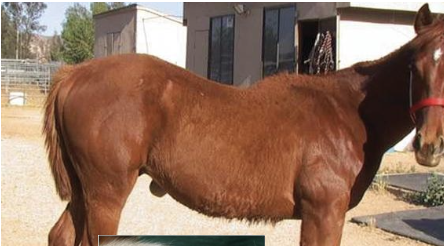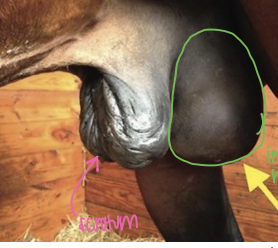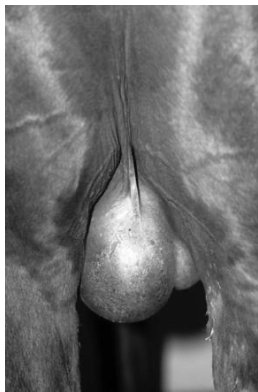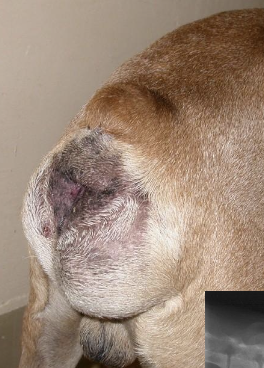mechanical obstructive disorders
1/109
There's no tags or description
Looks like no tags are added yet.
Name | Mastery | Learn | Test | Matching | Spaced |
|---|
No study sessions yet.
110 Terms
what is a mechanical disorder?
any condition that physically blocks or narrows a passage within the body, preventing the normal flow of substances like air, blood, or digestive contents
what are the two types of small bowel obstructive
mechanical
functional
what are common causes of mechanical small bowel obstruction?
adhesions
hernia
tumor
what is a functional small bowel obstruction?
a failure of muscles or nerves that leads to a disruption in motility of ingesta
what can functional small bowel obstruction be caused by?
electrolyte imbalances
nerve damage
infection
inflammation
why is classifying mechanical obstructions so important?
helps determine severity, prognosis, and treatment approach
what are the different ways we categorize mechanical obstructions?
anatomical region affected
based on cause
degree of obstruction
vascular compromise
duration of onset
etiology
what is the pathogenesis of mechanical obstructions?
initial obstruction and luminal distension
increased intraluminal pressure and reduce motility
mucosal injury and bacterial overgrowth
venous congestion and ischemia
systemic effects
endotoxemia nad septic shock
what are the gastrointestinal signs associated with mechanical obstructions?
vomiting
abdominal distension and pain
anorexia and dehydration
tenesmus
absence of feces or diarrhea
what are the systemic signs associated with mechanical obstructions?
weakness
lethargy
fever
shock
what are the most common diagnostic tests used to diagnose mechanical obstructions?
abdominal radiographs
abdominal ultrasound
GI endoscopy
exploratory surgery
physical examination (CRUCIAL)
what are non-surgical treatments used for obstructive disorders?
fluid therapy
dietary management
medical management
what are surgical treatments used for obstructive disorders?
exploratory laparotomy
gastrotomy
enterotomy
resection and anastomosis
what are indications for conservative treatment of obstructive disorders?
partial obstructions
stable patients
non-life threatening obstructions
what are indications for surgical treatment of obstructive disorders?
complete obstructions
unstable patients
life threatening obstructions
failure of conservative management
MCQ: A cat is brought to your clinic for persistent vomiting, lethargy, and abdominal discomfort. On examination, the cat appears unstable, showing signs of dehydration, tachycardia, and painful abdomen. Radiographs confirm the presence of a needle lodged in the stomach or intestines. Would conservative management be appropriate for this patient?
no
what are the complications of untreated obstructions?
perforation and peritonitis
severe dehydration and electrolyte imbalance
sepsis and systemic infections
strangulation and tissue necrosis
death if untreated
constipation
the infrequent, incomplete or difficult evacuation of feces, which are typically dry and hard
what can constipation progress to if left untreated?
obstipation
megacolon
obstipation
a severe and intractable form of constipation caused by prolonged retention of hard, dry feces
what are the predisposing factors to constipation
diet and environment
mechanical obstructions
neuromuscular dysfunction
metabolic and endocrine conditions
drugs and medication
what dietary and environmental factors can lead to constipation?
low fiber
dehydration
lack of exercise
stress and behavioral issues
what is the pathogenesis of constipation?
inadequate colonic motility
fecal retention and dehydration
colonic distension and weakening of muscle
mucosal injury and secondary inflammation
obstipation (if untreated)
what are the clinical signs of constipation?
infrequent or absent defecation
straining
painful defecation
lethargy and anorexia
vomiting (severe cases)
what do we use in the diagnosis of constipation?
history and physical examination
imaging
laboratory tests
what imaging can we use to diagnosis constipation?
abdominal radiographs
ultrasound
contrast studies (barium enema)
what species is most effected by constipation?
cats
what is a major cause of constipation in cats?
idiopathic megacolon
what is constipation in dogs commonly associated with?
pelvic fractures
tumors
prostate enlargement
diets that consist of bones
which breeds have congenital pelvic narrowing that can be a cause of constipation?
boston terriers and bulldogs
why is it important to differentiate straining?
important to determine if it is from constipation or from urinary problems (potential life threatening) especially in cats
what are the treatments for mild to moderate cases of constipation?
dietary adjustments
hydration support
laxatives and stool softeners
motility enhancers
regular exercise
enemas
what are the treatments for severe cases of constipation?
manual evacuation (enemas and digital removal)
IV fluids and electrolyte correction
surgical intervention depending on cause
what is megacolon?
a condition where the colon becomes abnormally enlarged and loses its ability to function properly
what is foreign body obstruction?
occurs when an ingested or penetrating object blocks normal flow through the gastrointestinal (GI) tract
what is the most common site in the GI tract for foreign body obstruction?
jejunum because of its length
what are the two main categories of foreign bodies?
non-linear
linear
what species are non-linear foreign bodies common in?
dogs
what are examples of non-linear foreign bodies?
toys
corn cobs
bones
socks
rocks
non-linear foreign body
a single, solid object that causes complete or partial obstruction
linear foreign body
a long, string-like material that becomes anchored at one point while the rest of it moves through the intestines
what are some examples of linear foreign bodies?
string
thread
ribbon
tinsel
what animals are linear foreign bodies common in?
cats
where can linear foreign bodies be found in the animal?
anchor around the base of the tongue, pylorus,
or at more distal sites in GIT.
what does a linear foreign body result in?
gathering and pleating of the intestine
(plication) around the foreign object which causes partial to complete obstruction
should we ever pull a string from the mouth?
NO!
how can we further classify foreign body obstructions?
degree of obstruction
location of obstruction along the intestinal tract
pathophysiological alterations
where in the body would a foreign body obstruction be located if classified as proximal?
esophagus, stomach, or small intestines
where in the body would a foreign body obstruction be located if classified as distal?
large intestines, colon, or rectum
what are predisposing factors of foreign body obstructions?
behavioral factors
age and breed disposition
dietary and medical factors
environmental factors
specific risk factors in cats (string and hairballs)
what is the pathogenesis of foreign body obstructions?
obstruction occurs
distension and mucosal damage
iscehmia and necrosis
bacterial translocation and sepsis
systemic complications and death (if left untreated)
what are the clinical signs of a foreign body obstruction?
vomiting
abdominal pain
dehydration
loss of appetite
diarrhea
lethargy
what diagnostic tests can be conducted to help diagnose foreign body obstructions?
bloodwork
radiography
ultrasound
what do most treatments of foreign body obstructions require?
surgical or endoscopic treatment
gastrotomy
opening the stomach
enterotomy
opening the intestine
what may be required if there is significant damage from a foreign body obstruction?
resection and anastomosis
MCQ: A 2-year-old indoor cat presents with straining to defecate, decreased appetite, and firm stool in the colon on palpation. Has a history of mild constipation but no vomiting or severe discomfort. what is the most appropriate type of treatment in this case?
conservative treatment
MCQ: 1-year-old Labrador Retriever who swallowed a tennis ball. Dog is lethargic, vomiting, and has severe abdominal pain. what is the most appropriate type of treatment in this case?
surgical (aggressive) treatment
MCQ: 5-month-old kitten ingested a string 24 hours ago. The kitten is still playful but has occasional vomiting and mild abdominal discomfort. what is the most appropriate type of treatment in this case?
surgical (aggressive) treatment
MCQ: 1-year-old Standard Poodle swallowed a LEGO piece an hour ago. The dog is bright, alert, and asymptomatic, with no vomiting or signs of distress. what is the most appropriate type of treatment in this case?
conservative treatment
hernia
a condition where an organ or tissue pushes through an abnormal opening but remains closed within a hernial sac formed by the peritoneum
what is required for there to be a true hernia?
there must be a hernial ring, sac, and contents involved
what is it required for it to be a false hernia?
lacks the hernial sac because the peritoneum is torn and organs move into abdominal position without being enclosed in a sac
direct hernias
occur through a rent in the body wall
indirect hernias
occur through an already existing ring, such as the inguinal ring or umbilical ring
what is the pathogenesis of hernias?
weakness or defect in the body wall
increased intra-abdominal pressure
herniation of abdominal contents
list the different types of hernias
umbilical hernia
inguinal hernia
scrotal hernia
perineal hernia
umbilical hernia
defect in the abdominal wall at the umbilicus, allowing abdominal contents to protrude
what is the cause of umbilical hernias?
failure of the umbilical ring to close after birth
what species are affected from umbilical hernias?
common in young animals of all species
what are the clinical signs of umbilical hernias?
soft, reducible swelling at umbilicus
may contain intestines or omentum
can become strangulated leading to pain and colic
what is the treatment of umbilical hernias?
small hernias may resolve on their own, larger ones may need surgical repair

what type of hernia is this?
umbilical hernia
inguinal hernia
protrusion of abdominal organs through the inguinal canal, forming a swelling near the groin
what is the cause of inguinal hernias?
weakness in the inguinal ring, allowing abdominal contents to pass through
what species are affected by inguinal hernias?
common in breeding males and occasionally in females during pregnancy
what are the clinical signs of inguinal hernia?
swelling in the inguinal region
if intestines trapped can lead to strangulation causing colic and pain
what is the treatment for inguinal hernias?
surgical correction usually required especially if strangulation is present

what type of hernia is this?
inguinal hernia
scrotal hernia
a condition where abdominal contents pass through the inguinal canal and into the scrotum
what is the cause of scrotal hernias?
genetic factors, acquired trauma, or a combination of both
what species are affected by scrotal hernias?
most common in boars, stallions, and dogs
what are the clinical signs of scrotal hernia?
unilateral or bilateral scrotal swelling
pain
testicular asymmetry
what is the treatment of scrotal hernia?
surgical castration often performed in severe cases

what type of hernia is shown?
scrotal hernia
perineal hernia
weakening or traumatic tear in the muscles of the area, resulting in the bladder, intestines, or fat pushing through the muscle to an abnormal position just under the skin
what are the causes of perineal hernia?
weakness of the pelvic diaphragm muscles, leading to displacement of abdominal organs
what species are affected by perineal hernias?
older intact male dogs
what are the clinical signs of perineal hernia?
swelling near anus
straining
constipation
urinary problems
what is the treatment of perineal hernias?
surgical repair with reinforcement of the pelvic muscles

what type of hernia is shown?
perineal hernia
what is used in the diagnosis of inguinal hernia?
palpation of soft mass in groin
ultrasound and X rays
doppler ultrasound
what is used in teh diagnosis of umbilical hernia?
palpation of soft lump at belly button
ultrasound
what is used in the diagnosis of scrotal hernia?
swelling in scrotum (soft or firm)
ultrasound
what is used in the diagnosis of perineal hernia?
rectal exam (to see muscle weakness)
X-rays
ultrasound
when is emergency surgery required with hernias?
when intestines are trapped
which hernias is surgical repair always recommended?
scrotal and perineal hernias
what is the risk of complications of inguinal hernias?
high due to risk of strangulation
what is the risk of complications of umbilical hernias?
low most resolve on their own